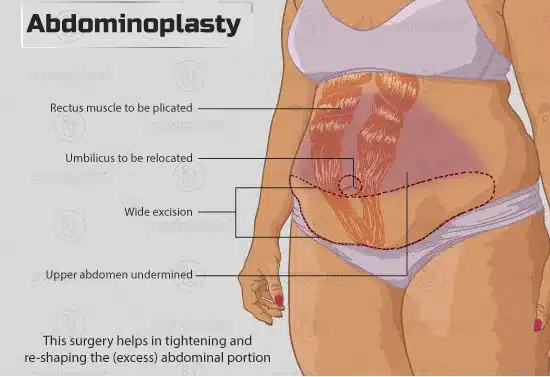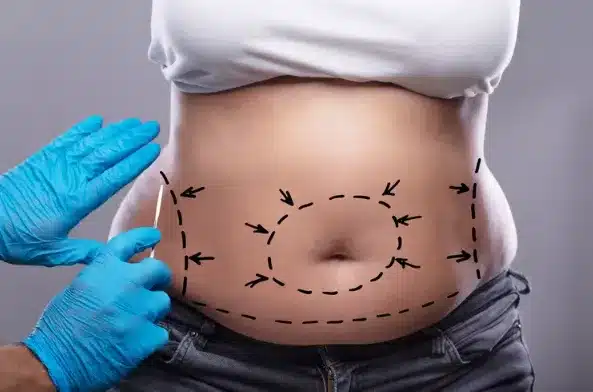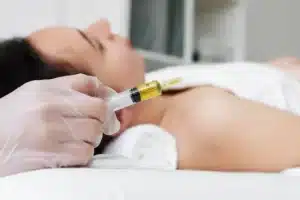Abdominoplasty aftercare encompasses vital steps to ensure optimal healing and outcomes post-surgery. This comprehensive process includes diligent scar care, hydration, and adherence to follow-up appointments. Proper hydration aids in tissue regeneration, while meticulous scar care and regular follow-up appointments are essential for monitoring progress and addressing any concerns promptly.
Immediate Post-Operative Abdominoplasty aftercare
Following abdominoplasty, the immediate post-operative period is crucial for setting the stage for a successful recovery. Here are some critical steps to take during this period:
Follow Medical Instructions
Listen carefully to your surgeon’s instructions and follow them meticulously. These instructions may include medication guidelines, wound care, and activity restrictions. Compliance with these instructions is essential to ensure proper healing and minimize the risk of complications.
Managing Pain and Discomfort
Take prescribed pain medication as directed by your surgeon to keep discomfort manageable. Avoid taking additional medications without consulting your surgeon.
Wound Care
Keep the incision sites clean and dry. Follow your surgeon’s instructions on when and how to change dressings. Report any signs of infection, such as increased redness, swelling, or drainage, immediately.
Monitoring Drains (if applicable)
If drain tubes were placed during surgery, carefully monitor and record the amount of fluid draining. Follow your surgeon’s guidance on when to empty and remove the drains.
Clinic contact number: +989371200167
Wearing Compression Garments
Wear compression garments as instructed by your surgeon to minimize swelling and support the healing tissues. This may need to be worn continuously for several weeks.
Movement and Activity Restrictions
Avoid strenuous activities, heavy lifting, and bending during the initial recovery period. Follow your surgeon’s guidelines on when you can gradually resume light activities.

Take Prescribed Medications
Your surgeon may prescribe pain medication, antibiotics, and other medications to manage pain, prevent infection, and promote healing. Take these medications as directed, and if you have any concerns or experience adverse effects, contact your surgeon immediately.
Wound Care
Proper wound care is crucial for preventing infections and ensuring optimal healing. Keep the incision site clean and dry as instructed by your surgeon. Gently clean the incision area with mild soap and water, pat it dry, and follow any additional wound care instructions provided. Your surgeon may recommend using sterile dressings or ointments to aid in healing.
Use Compression Garments for Abdominoplasty aftercare
Your surgeon may recommend wearing compression garments to minimize swelling and support healing. These garments should be worn as instructed for several weeks following the procedure. Compression garments help reduce fluid accumulation, improve blood circulation, and support the surgical site.
The abdominoplasty diet plays a crucial role in post-surgery healing and recovery. This dietary plan focuses on providing essential nutrients to support the body’s healing process after abdominoplasty, ensuring a smooth recovery. By emphasizing nourishing foods and hydration, the abdominoplasty diet aids in promoting optimal healing and achieving the desired results.
Limit Physical Activity
During the initial phase of recovery, limiting physical activity and avoiding strenuous exercises is important. Follow your surgeon’s instructions regarding activity restrictions and gradually increase your activity level as advised. Excessive physical exertion too soon after surgery can impair healing and increase the risk of complications.
Managing Discomfort and Swelling Abdominoplasty aftercare
Discomfort and swelling are joint Abdominoplasty aftercare. Here are some strategies to help manage these issues:
A skin lift, a facelift, or rhytidectomy, is a surgical procedure designed to address various facial and neck aging signs. This cosmetic intervention can significantly improve the appearance of sagging skin, wrinkles, jowls, and deep folds. By tightening and lifting the skin, a skin lift can restore a more youthful and refreshed look.
Pain Management

Take pain medication as prescribed by your surgeon to alleviate any post-operative discomfort. Additionally, applying ice packs to the treated area for short periods can help reduce swelling and numb the area. Be sure to follow your surgeon’s instructions regarding using ice packs to avoid any adverse effects.
Stay Hydrated
Drinking plenty of water is one of the essential Abdominoplasty aftercares for maintaining overall health and promoting healing. It helps flush out toxins from the body, reduces swelling, and keeps the skin hydrated. Aim to drink at least 8 cups (64 ounces) of water daily unless your surgeon instructs otherwise.
Avoid Strenuous Activities
Refrain from strenuous activities, heavy lifting, and exercises that strain the abdominal muscles for the initial weeks following surgery. Your surgeon will provide specific instructions regarding when you can gradually resume physical activities. It is essential to allow adequate time for your body to heal before resuming strenuous exercises or activities that could strain the surgical area.
Maintain a Healthy Diet
Eating a balanced diet rich in nutrients is essential for the healing process. Consume foods that promote tissue repair, such as lean proteins, fruits, vegetables, and whole grains. Avoid excessive salt intake, as it can contribute to swelling. Adequate protein intake is essential as it aids in wound healing and tissue regeneration. Consult with a registered dietitian or your surgeon for personalized dietary recommendations.
- High-Protein Foods: Include lean meats, poultry, fish, eggs, dairy products, legumes, and tofu to support tissue repair and recovery.
- Fresh Fruits and Vegetables: opt for a variety of colorful fruits and vegetables rich in vitamins, minerals, and antioxidants to boost the immune system and reduce inflammation.
- Whole Grains: Choose whole grains like brown rice, quinoa, oats, and whole wheat bread to provide sustained energy and fiber for healthy digestion.
- Healthy Fats: Incorporate sources of healthy fats such as avocados, nuts, seeds, and olive oil to support skin health and reduce inflammation.
- Hydration: Drink plenty of water throughout the day to stay hydrated and help flush out toxins. Herbal teas and infused water can also be refreshing options.
- Foods Rich in Vitamin C: Vitamin C is essential for collagen production and wound healing. Include citrus fruits, strawberries, kiwi, bell peppers, and broccoli in your diet.
- Low-Sodium Options: Minimize salt intake to reduce swelling (edema) and bloating. Avoid processed foods and opt for homemade meals seasoned with herbs and spices instead of salt.
Monitor and Report Any Concerning Symptoms
While some discomfort and swelling are expected after abdominoplasty, monitoring your symptoms and reporting any concerning changes to your surgeon is essential. Look for signs of infection, such as increased redness, warmth, swelling, pus, or foul-smelling discharge from the incision site. Also, inform your surgeon if you experience severe pain, excessive bleeding, or other unusual symptoms.

Long-Term Abdominoplasty aftercare
While the initial healing period is critical, long-term care is equally essential for ensuring optimal results and maintaining the benefits of abdominoplasty. Here are some recommendations for the long term:
Follow-up Appointments
Attend all follow-up appointments scheduled with your surgeon. These appointments allow the surgeon to monitor your progress, address concerns, and ensure that you are healing correctly. Follow your surgeon’s recommendations regarding the frequency of follow-up visits.
Clinic contact number: +989371200167
Gradual Return to Exercise
Once cleared by your surgeon, gradually reintroduce exercise into your routine. Start with low-impact activities and gradually increase intensity over time. Regular exercise helps maintain muscle tone and overall fitness. Consult your surgeon or a qualified physical therapist for specific exercise recommendations based on your needs and healing progress.
- Consider working with a certified fitness trainer or physical therapist experienced in post-operative recovery to develop a customized exercise plan.
- Incorporate Strength Training: Gradually incorporate resistance training to build overall strength and muscle tone. Focus on exercises that engage multiple muscle groups.
- Cardiovascular Exercise: Include moderate-intensity cardiovascular activities like brisk walking, jogging, cycling, or swimming to improve cardiovascular health and burn calories.
- Avoid High-Impact Activities: Minimize high-impact activities such as running, jumping, or heavy lifting, especially if you experience discomfort or strain in the abdominal area.
Maintain a Stable Weight
Maintaining a stable weight is crucial for preserving the results of your abdominoplasty. Fluctuations in weight can affect the appearance of the abdomen and potentially require additional procedures to correct. Focus on adopting a healthy lifestyle that includes a balanced diet and regular exercise to help maintain a stable weight over the long term. This is important for abdominoplasty aftercare.
Practice Self-Care
There is no single answer for how long it will take to recover from a tummy tuck. Like any surgical procedure, there is a general time frame, but individual recoveries are based on a variety of factors. Connect Website
Final Thoughts about Abdominoplasty Aftercare
Abdominoplasty aftercare is vital in achieving successful results and a smooth recovery. By following the guidance provided by your surgeon, taking prescribed medications, practicing good wound care, managing discomfort and swelling, and maintaining long-term care, you can optimize your healing process and enjoy the full benefits of your abdominoplasty.
Remember to consult your surgeon for any concerns or questions during recovery. Proper aftercare can enhance your healing journey and achieve the desired outcome.
Fun fact: Did you know proper aftercare is as crucial as the abdominoplasty procedure? Many fondly refer to abdominoplasty as a ‘tummy tuck,’ but there’s more to it than tightening up!
Tummy tuck recovery requires following post-operative guidelines, adopting surgical healing tips, and being aware of the recovery timeline.
So, the next time you hear about someone having an abdominoplasty, remember it’s not just the surgery but the attentive aftercare that ensures those fantastic results!
Clinic contact number: +989371200167
The Impact of Johns Hopkins and Mayo Clinic Protocols on Abdominoplasty Recovery
Abdominoplasty, commonly known as a “tummy tuck,” requires meticulous aftercare to ensure optimal healing and the desired aesthetic outcome. Prominent institutions such as Johns Hopkins University and the Cleveland Clinic have led extensive research in postoperative care techniques that significantly enhance recovery. Experts like Dr. Linda Phillips and Dr. Maria Siemionow have published guidelines highlighting the importance of careful wound management and the prevention of post-surgical complications. These protocols emphasize maintaining the surgical site’s integrity, reducing infection risks, and ensuring that patients follow a regimented schedule for mobility to enhance circulatory health.
The industry standards for abdominoplasty aftercare have been notably influenced by the work at Mayo Clinic, a leader in innovative post-surgical treatment methods. Recent statistics show that adherence to specialized aftercare programs can reduce the risk of complications post-abdominoplasty by up to 30%. These programs often include lymphatic drainage massages, compression garments, and specific nutritional guidelines that support tissue repair and reduce swelling.
Advanced terms such as “seroma prevention” and “scar tissue minimization” are central to the discourse in this field, reflecting a deep understanding of the physiological processes involved in recovery. The focus on evidence-based aftercare practices underscores the evolution of abdominoplasty from a purely cosmetic procedure to a comprehensive surgical discipline that prioritizes patient safety and outcomes.
conclusion
In conclusion, effective abdominoplasty aftercare plays a pivotal role in facilitating a smooth recovery process and achieving desirable outcomes. Diligent wound care, including proper cleaning and dressing changes, is essential to prevent infection and promote healing, while the consistent use of compression garments aids in reducing swelling and supporting the newly contoured abdominal area. Moreover, attentive scar care helps minimize scarring and encourages the formation of a more aesthetically pleasing outcome.
Regular follow-up appointments with the surgeon are crucial for monitoring progress, addressing any concerns, and ensuring that the healing process is proceeding as expected. Additionally, proactive pain management strategies, such as prescribed medications and appropriate rest, contribute to patient comfort and overall satisfaction with the abdominoplasty experience. By adhering to these key elements of abdominoplasty aftercare, individuals can optimize their recovery journey and enjoy the transformative benefits of this cosmetic procedure.
FAQs
- How long should I wear compression garments after abdominoplasty? Wear compression garments for several weeks post-surgery as directed by your surgeon.
- Can I resume exercise for Abdominoplasty aftercare? Gradually reintroduce exercise according to your surgeon’s recommendations.
- How important is wound care after abdominoplasty? Proper wound care is crucial for preventing complications and ensuring optimal healing.
- When can I resume normal activities like exercise? Light activities can often be resumed after a few weeks, but strenuous exercise should be avoided for about 6 weeks or until cleared by your surgeon.
- How should I care for my incisions? Your surgeon will provide specific instructions for incision care, which may involve keeping the area clean and dry, applying topical ointments, and monitoring for signs of infection.
- Will I have drains, and how long will they stay in? Drain tubes may be placed during surgery to remove excess fluid. Your surgeon will determine when it’s appropriate to remove them, typically within the first week or two after surgery.
What you need to know about your tummy tuck recovery | ASPS (plasticsurgery.org)



